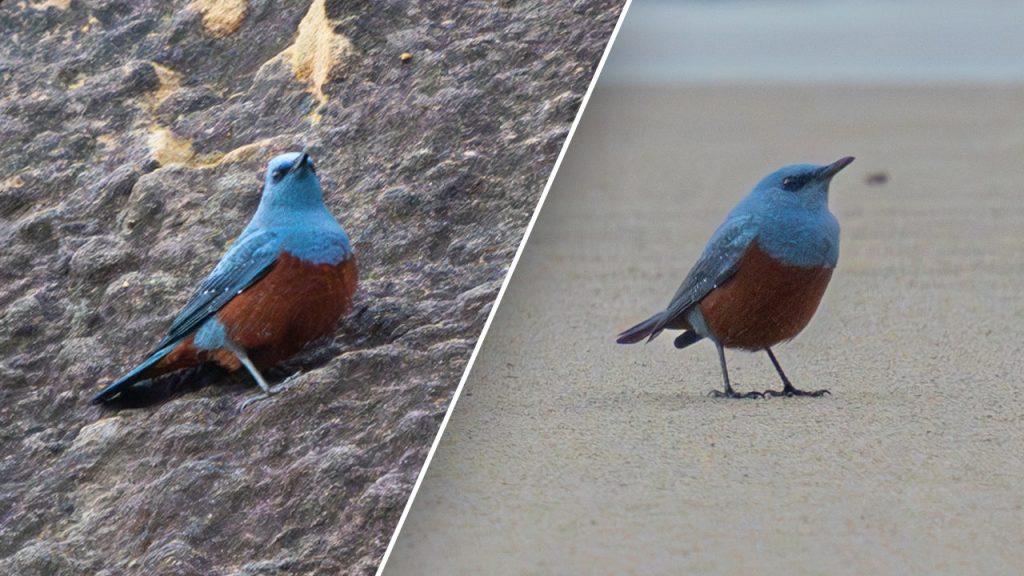An amateur photographer in Oregon recently captured a subject that has bird lovers buzzing – the first U.S. sighting of a blue rock thrush, a species that experts are calling the “bird of the century.” Michael Sanchez, a middle school band director from Vancouver, Oregon, stumbled upon the bird while taking photos of a waterfall at Hug Point State Recreation Site, south of Cannon Beach. Sanchez, a new photographer, was surprised by the bird’s vibrant blue and orange coloring, describing it as a good model for his pictures. The bird lingered for a short while, allowing Sanchez to capture some stunning images before flying away.
Sanchez’s photos quickly gained attention on social media, with birders from across the country reaching out to inform him of the significance of his sighting. The blue rock thrush is a rare bird that is native to Europe and Asia, making Sanchez’s photographs a rare discovery in the United States. The only previous record of this species in North America dates back to a sighting in British Columbia in 1997. Bird experts described the blue rock thrush as a cute, plucky bird that is often seen sitting on rocks and cliffs, hopping around and feeding on bugs.
While the appearance of the blue rock thrush in Oregon is a rare and exciting event, the circumstances of how the bird arrived in the state remain unclear. Experts believe the bird may have been a vagrant, blown off course during migration season and landing on the Oregon coast. Despite the numerous bird watchers flocking to Hug Point in hopes of catching a glimpse of the rare bird, the blue rock thrush disappeared shortly after Sanchez’s sighting, leaving its whereabouts unknown. A few days later, researchers in California spotted what may be another blue rock thrush on Southeast Farallon Island, although it’s uncertain if it’s the same bird photographed by Sanchez.
The peak migration season is currently underway, which could explain the unexpected appearance of the blue rock thrush in Oregon. Cass Talbot, an expert with the Bird Alliance of Oregon, suggests that the bird may have been blown off course by a storm or accidentally landed on a ship before reaching the U.S. coast. While some birds may find their way back home, others may get lost and fail to return. To help these migrating birds, Talbot encourages individuals to turn off lights during migration, keep cats indoors, and make windows bird-safe. Sanchez, who believes in finding beauty wherever one goes, is using his experience to inspire his students to look for the extraordinary in their surroundings and keep their hearts and eyes open.
In summary, the sight of a blue rock thrush in Oregon marks a significant event for bird enthusiasts, as it is the first documented sighting of the species in the United States. The discovery was made by amateur photographer Michael Sanchez, who captured stunning images of the vibrant bird at Hug Point State Recreation Site. Despite the bird’s short stay and subsequent disappearance, the photographs gained widespread attention, with experts confirming the rarity of the blue rock thrush. The unusual appearance of this bird in Oregon raises questions about its journey and origin, with theories suggesting it may have been blown off course during migration. As bird watchers continue to search for the elusive bird, the public is encouraged to take steps to ensure the safety and wellbeing of migrating birds. Sanchez’s encounter serves as a reminder to appreciate the beauty that surrounds us and keep an open heart and mind to unexpected treasures in nature.













